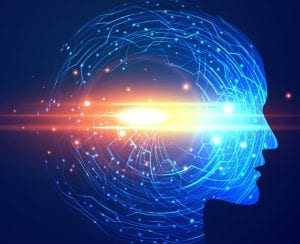It is your duty as a trader to take each of these aspects into account before selecting a platform.
Artificial intelligence has grown rapidly in the past few years and is now a part of many different industries, such as online trading and finance. By processing enormous volumes of data rapidly and utilizing machine learning and data analysis, artificial intelligence (AI) algorithms help traders spot patterns, trends, and possible opportunities in the financial markets.
Introducing artificial intelligence (AI) algorithms into online trading terminal software has revolutionized the industry by providing traders with a competitive advantage in a constantly shifting market. Artificial intelligence (AI)-driven tools can analyze market data faster than traditional trading methods, which mainly rely on human intuition and decision-making. This lowers the possibility of human error and emotional biases.
In this article, we will investigate the transformative impact of AI algorithms on trading software and demonstrate how they are revolutionizing online trading.
Impact of Algorithms on Trading Terminal Softwares
Trading terminal software is the foundation of modern trading operations, providing traders with the tools and capabilities required to navigate the complexities of financial markets.
With the incorporation of AI and ML algorithms, these platforms are experiencing a paradigm shift, ushering in a new era of efficiency, speed, and sophistication.
1. Improved Data Analysis and Decision Making
One of the most significant ways that AI and ML algorithms are altering the trading terminal software landscape is through improved data analysis and decision-making capabilities. These algorithms can analyze massive amounts of market data in real time, detecting patterns, trends, and anomalies that human traders may miss. Using advanced statistical models and predictive analytics, AI and ML-powered trading terminal software provides traders with actionable insights and recommendations, allowing them to make more informed and profitable trading decisions.
2. High-Frequency Trading (HFT) Optimization
With the integration of AI and machine learning (ML), high-frequency trading (HFT), a strategy based on lightning-fast transactions, is experiencing a renaissance. These algorithms, which are capable of processing large amounts of data and adapting to market changes in real time, enable traders to capitalize on fleeting market opportunities with unparalleled speed and precision. These technologies have been shown to improve prediction accuracy and adaptability in volatile market environments.
3. Automated trading strategies

Another important feature of AI and ML in trading terminal software is the automation of trading strategies. Traditionally, traders would manually execute trades after analyzing market data and signals. However, with AI and machine learning algorithms, trading terminal software can now automate this process, executing trades based on predefined criteria and parameters. This automation not only saves time and effort when executing trades, but it also allows traders to capitalize on market opportunities more quickly and precisely.
4. Customization and Personalization
AI and ML algorithms enable more customization and personalization of trading terminal software. These algorithms can learn from previous trading behavior and user preferences, tailoring the user experience to individual traders’ specific needs and goals. AI-powered trading terminal software can adapt to each user’s unique preferences and trading styles, enhancing their overall trading experience. This includes customizing chart layouts, setting up alerts and notifications, and optimizing trading strategies.
5. Real-time Market Monitoring and Analysis
AI and machine learning algorithms enable real-time market monitoring and analysis within trading terminal software. These algorithms provide traders with real-time market data, news, and analysis, allowing them to stay informed and respond quickly to changes in market conditions.
Conclusion
While many trading platforms incorporate AI algorithms, there are still other factors to consider before choosing a trading terminal software. It is your duty as a trader to take each of these aspects into account before selecting a platform. As soon as you do, you will have access to AI algorithms that are integrated into numerous platforms.
Frequently Asked Questions
How do algorithms work in trading?
Trading algorithms automate buying and selling based on preset criteria, analyzing market data to identify patterns and quickly execute trades. They play a critical role in high-frequency trading, risk management, and portfolio optimization.
What is algo trading software?
Algorithmic trading software is a computer program that automates the execution of financial trading strategies. It employs algorithms to analyze market data, identify trading opportunities, and carry out trades based on predefined criteria.
Which platforms incorporate algorithms into their trading terminal software?
Several trading terminal software platforms use algorithms to improve trading capabilities. Notable examples include TickTrader, TradeStation, and Interactive Brokers. These platforms allow traders to automate trading strategies using custom algorithms, enabling quick and accurate execution of trades.


Join the conversation!